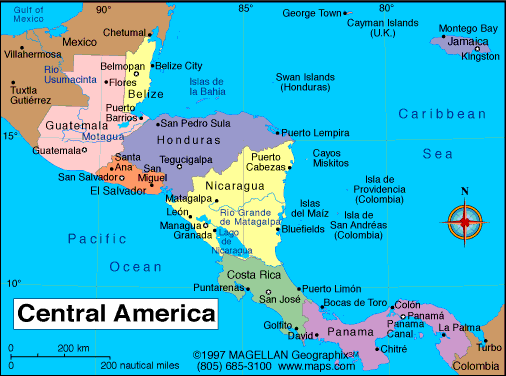
There are many wonderful aspects of material aid. For example, several truckfuls of hard-to-find medical supplies went to a nursing school, so that people from rural communities can have better access to training and resources in more remote areas. I also enjoyed seeing the Nicaraguan churches working together in this process of unloading and distributing the resources. But to be perfectly honest, I'm having a lot of questions about material aid here in Nicaragua.
- One of our ultimate goals is for the Nicaraguan economy to grow and become healthy and independent so that all people can work, eat, clothe themselves, and be educated. Why are we sending things that could be produced or bought within the Nicaraguan economy? Are we fighting against ourselves?
- Irony: all the social comissions of the churches have sewing schools as an income generation project for women, so they had requested fabric. Instead of fabric, clothes arrived. Everyone was thankful, and the clothes are high quality and will be used. But how can the sewing schools compete with free clothing? How are they going to make money?
 - Will the resources make it outside Managua? (Most of the material we gave to the churches probably won't. It is just too expensive and time-consuming to coordinate transporting it all. There is not the infrastructure, even though the most impoverished communities are in rural areas)
- Will the resources make it outside Managua? (Most of the material we gave to the churches probably won't. It is just too expensive and time-consuming to coordinate transporting it all. There is not the infrastructure, even though the most impoverished communities are in rural areas)- How much of material aid is a feel-good boost for the people who give it, and how much is contributing to the goals of accompanying and empowering communities to be sustainable and break cycles of poverty, dependency, and injustice?
- How do we help to encourage this conversation when so much of it is related to very complicated economic, social, and psychological factors?
Through all these questions, God is at work. People are donating and working in material resources because they want to be connected to people in need around the world. People here are compassionately serving their communities and excited to share with them resources and love.

1 comment:
Big Al,
Only you would complain about free stuff. J/k I love your thoughtfulness, but this problem will not fix itself. It will probably take a certain red-head and his wife to set up a network of companies in Nicaragua that can produce the same products that are being sent. Then you just ask for money instead of resources. But to get the money you will have to go to MCC headquarters and visit the North American church and convince them that justice and self-worth and economic indepence is needed more in Nicaraguga than just charity. Once you do that I think you might have something. I'm trying to add to the conversation not tell you what to do. I think you are right and I support you and would love to help. I hope you both are doing well.
We love you guys, Steve(Nicki& boys)
Post a Comment